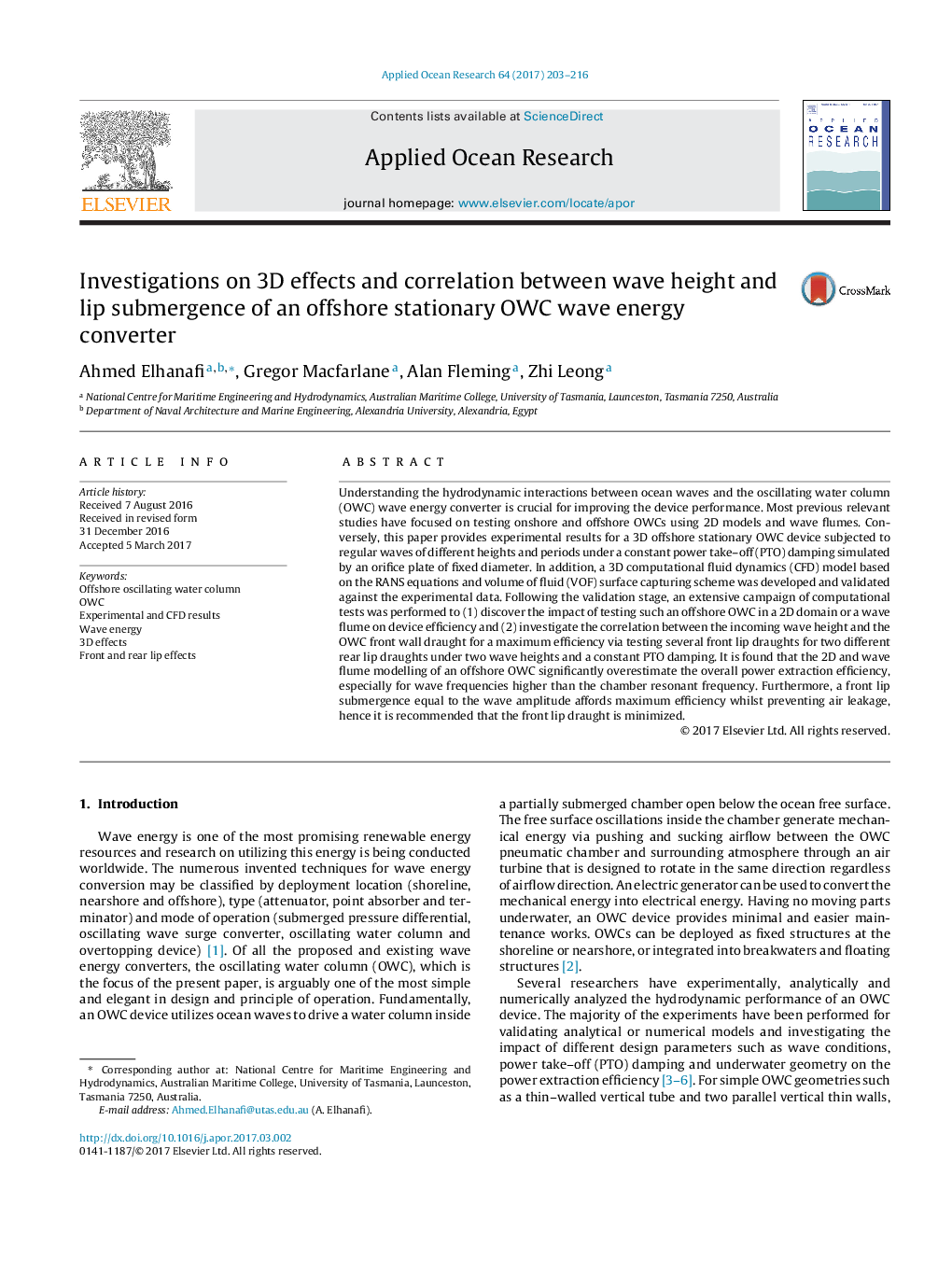| Article ID | Journal | Published Year | Pages | File Type |
|---|---|---|---|---|
| 5473192 | Applied Ocean Research | 2017 | 14 Pages |
Abstract
Understanding the hydrodynamic interactions between ocean waves and the oscillating water column (OWC) wave energy converter is crucial for improving the device performance. Most previous relevant studies have focused on testing onshore and offshore OWCs using 2D models and wave flumes. Conversely, this paper provides experimental results for a 3D offshore stationary OWC device subjected to regular waves of different heights and periods under a constant power take-off (PTO) damping simulated by an orifice plate of fixed diameter. In addition, a 3D computational fluid dynamics (CFD) model based on the RANS equations and volume of fluid (VOF) surface capturing scheme was developed and validated against the experimental data. Following the validation stage, an extensive campaign of computational tests was performed to (1) discover the impact of testing such an offshore OWC in a 2D domain or a wave flume on device efficiency and (2) investigate the correlation between the incoming wave height and the OWC front wall draught for a maximum efficiency via testing several front lip draughts for two different rear lip draughts under two wave heights and a constant PTO damping. It is found that the 2D and wave flume modelling of an offshore OWC significantly overestimate the overall power extraction efficiency, especially for wave frequencies higher than the chamber resonant frequency. Furthermore, a front lip submergence equal to the wave amplitude affords maximum efficiency whilst preventing air leakage, hence it is recommended that the front lip draught is minimized.
Related Topics
Physical Sciences and Engineering
Engineering
Ocean Engineering
Authors
Ahmed Elhanafi, Gregor Macfarlane, Alan Fleming, Zhi Leong,
